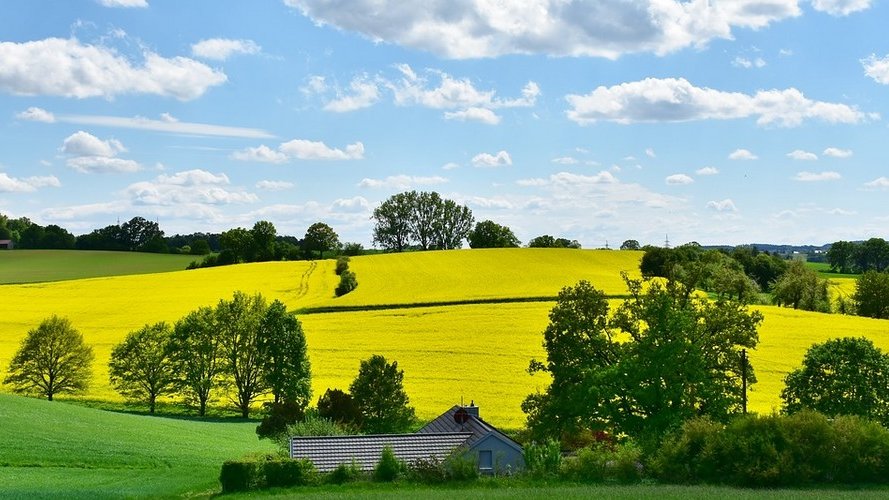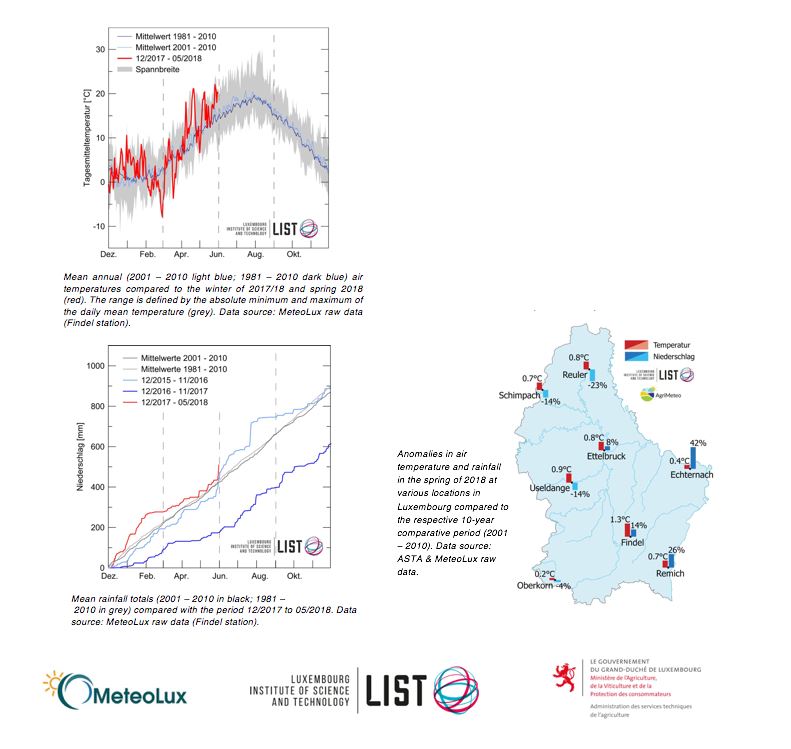
Meteorological bulletin list - spring 2018
The Luxembourg Institute of Science and Technology (LIST), the Administration des Services Techniques de l’Agriculture (ASTA) and MeteoLux have just published the analysis of the meteorological data collected within the framework of long-term monitoring activities of hydroclimatological variables for Spring 2018.
Compared with the long-term average, the spring of 2018 in Luxembourg was warmer than usual and there was more rainfall in the east of the country.
Meteorological Situation
In March, the spring of 2018 was characterised primarily by very cold weather, while during April and May the weather was often warm, with the feel of early summer. In March, easterly and north-easterly air currents increasingly carried cool air masses towards Luxembourg. The primary feature of April was persistent areas of high pressure. As a result, summerlike temperatures and cloudless skies prevailed, although in the last 10 days of the month, cool and unstable maritime air masses ensured typical April weather. While May was initially dry and warm, the general weather situation meant that humid and warm air masses often reached Luxembourg from the middle of the month, which resulted in an increase in the risk of thunderstorms.
Temperatures
In spring 2018, the average seasonal temperatures at the analysed stations of the Administration des services techniques de l’agriculture (ASTA) and the MeteoLux station were above those from the same period in 2001 − 2010. The smallest deviation, of 0.2°C, was measured at the Oberkorn station (ASTA), while the greatest deviation, of 1.3°C, was registered at the Findel station (MeteoLux) (+1.9°C based on the reference period 1981 − 2010). The absolute maximum air temperature for spring 2018 at the stations analysed in this respect was 29.4°C, which was recorded on 28 May in Schimpach. The temperatures at the Findel station were above those of the comparative periods, especially in April and May. May 2018 was the warmest May since records started to be collected at Findel station in 1947.
Rainfall
Total rainfall at the ASTA stations in the east of the country and the Findel station (MeteoLux) were above the values for the comparative period 2001 – 2010. On the other hand, negative deviations were recorded in the west and north of the country. The smallest deviation, of -4%, was recorded at the Oberkorn station. In Reuler, around a quarter (-23%) less rainfall was measured, while at the Echternach station, 42% more rainfall was recorded. Of the stations analysed here, the highest value of the spring was recorded in Echternach and Ettelbrück, with total rainfall of 220 mm. The rainfall pattern at the Findel station showed the relatively low rainfall in March and April, which was followed by a damper period in May. Spring ended with violent thunderstorms and intensive rainfall on the night of 1 June (see middle graph).
Hot Topic : Difficult Times For Rapeseed Growers
The very warm and relatively dry weather in April very much promoted the growth of rapeseed plants. Along the Moselle, the plants were in bloom for approximately 24 days, and this was thus the shortest blooming period since 2008. The weather conditions, combined with the strong growth, resulted in the physiological phenomenon of bud wilt, a form of growth depression that leads to the flower buds drying out. Another consequence of the weather conditions was the substantially reduced effective period, in some cases between just 3 and 5 days, of the insecticide used to combat the rape pollen beetle. In addition to this, local hail storms caused damage on 29 April.

Communiqué LIST Luxembourg Institute of Science & Technology










